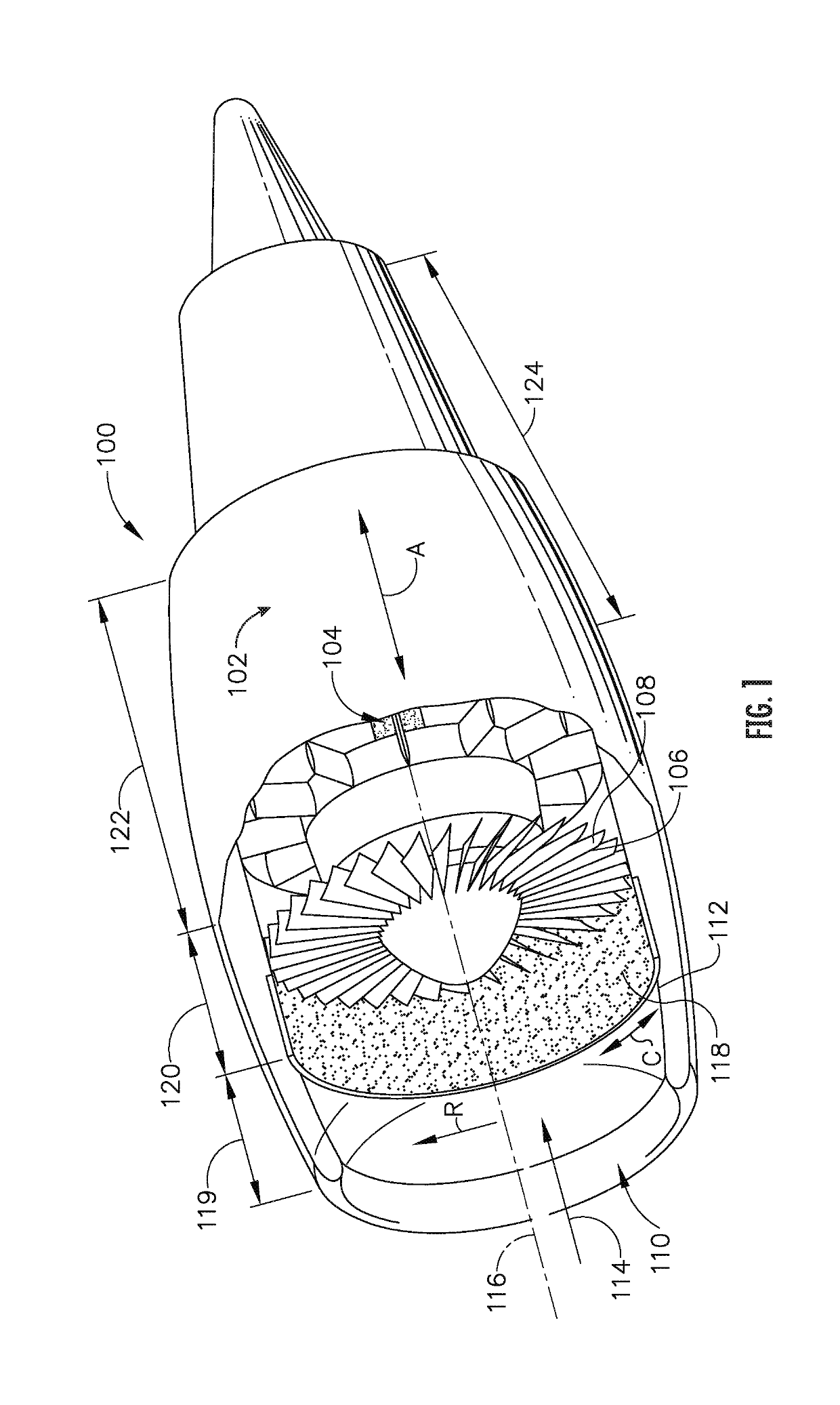Acoustic liners with oblique cellular structures
a technology of cellular structure and acoustic liners, which is applied in the field of acoustic structures, can solve the problems of increasing the size and weight of acoustic liners, affecting the sound quality of acoustic liners,
- Summary
- Abstract
- Description
- Claims
- Application Information
AI Technical Summary
Benefits of technology
Problems solved by technology
Method used
Image
Examples
Embodiment Construction
[0050]Various aspects and features are described below in greater detail with reference to the appended figures, including among other things, exemplary acoustic liners, core layers for acoustic liners with oblique polyhedral cellular structures, turbomachines that utilize such acoustic liners, and related acoustic dampening and attenuation systems and methods. Numerous specific details are set forth in order to provide a thorough understanding of the presently disclosed subject matter. It will be apparent, however, to those skilled in the art, that the presently disclosed subject matter may be practiced without some or all of these specific details. In other instances, well known aspects and features have not been described in detail in order to not unnecessarily obscure the present disclosure. Those skilled in the art will also appreciate that various modifications and variations can be made to the disclosed subject matter without departing from the spirit and scope of the present...
PUM
| Property | Measurement | Unit |
|---|---|---|
| convergence angle | aaaaa | aaaaa |
| convergence angle | aaaaa | aaaaa |
| convergence angle | aaaaa | aaaaa |
Abstract
Description
Claims
Application Information
 Login to View More
Login to View More - R&D
- Intellectual Property
- Life Sciences
- Materials
- Tech Scout
- Unparalleled Data Quality
- Higher Quality Content
- 60% Fewer Hallucinations
Browse by: Latest US Patents, China's latest patents, Technical Efficacy Thesaurus, Application Domain, Technology Topic, Popular Technical Reports.
© 2025 PatSnap. All rights reserved.Legal|Privacy policy|Modern Slavery Act Transparency Statement|Sitemap|About US| Contact US: help@patsnap.com



